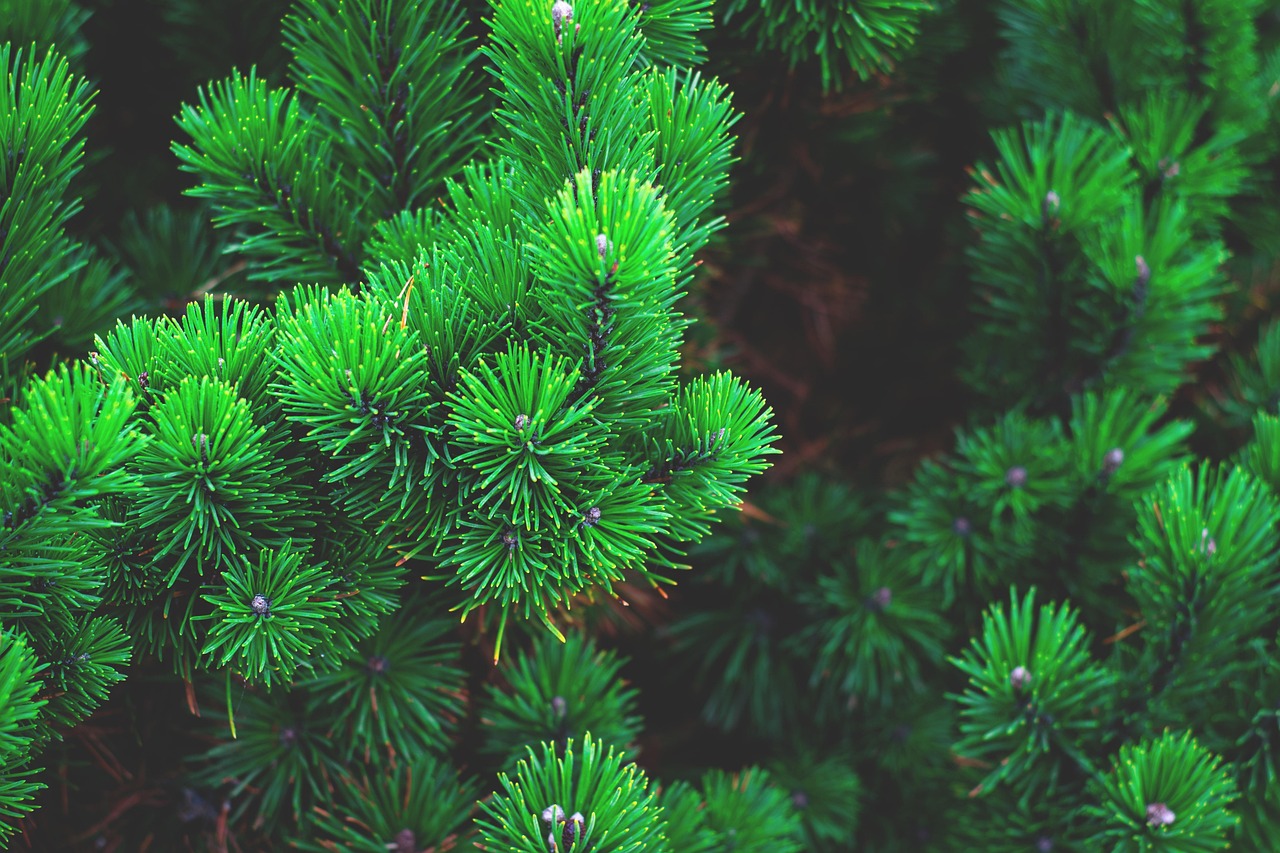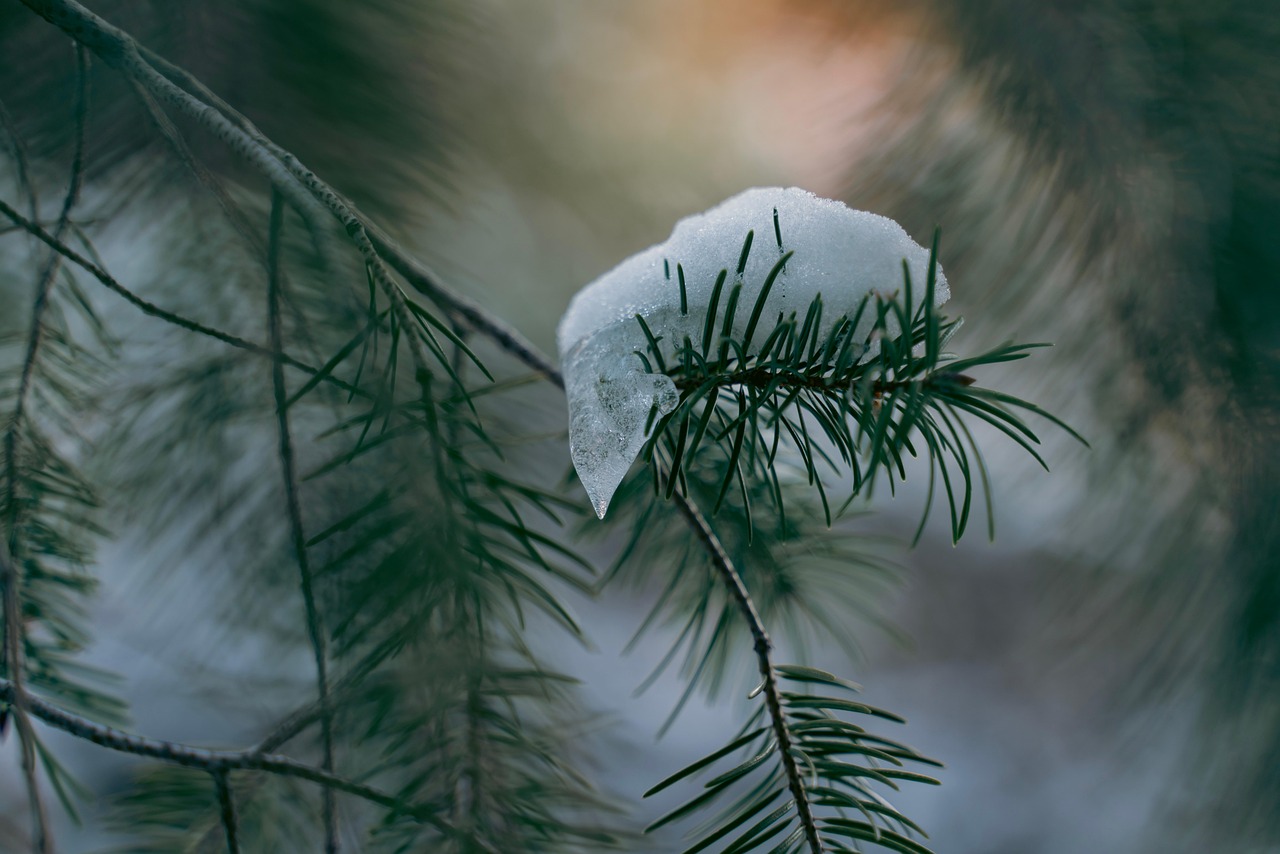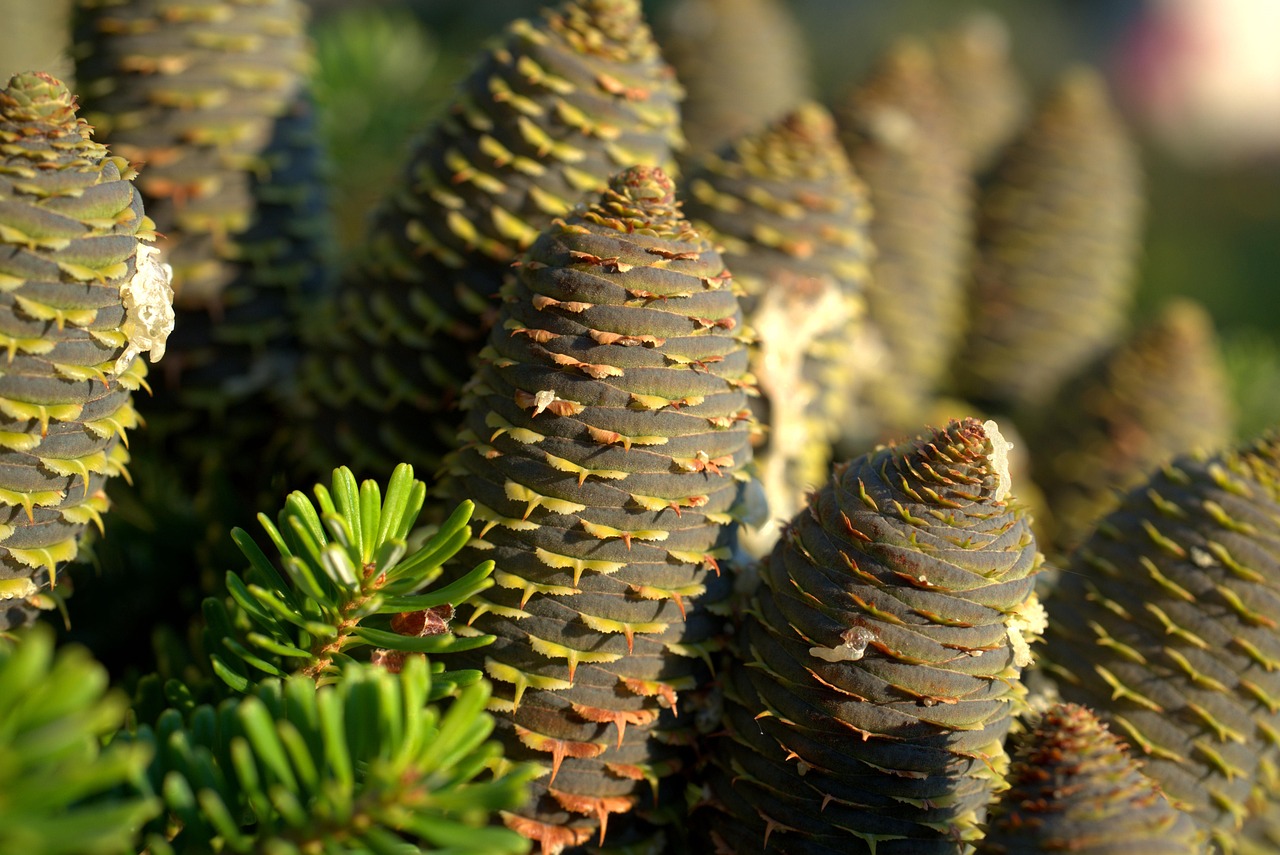White pine trees (Pinus strobus) typically exhibit a moderate growth rate, averaging between 24 to 36 inches per year under optimal conditions. Factors such as soil quality, climate, and competition with other vegetation can influence their growth. In managed timber woods, these trees can reach maturity in about 30 to 50 years, making them valuable for sustainable forestry.
The white pine tree (Pinus strobus) has an average growth rate of about 24 to 36 inches per year under optimal conditions. This rapid growth makes it a popular choice for timber production, as it can reach maturity in 20 to 30 years.
Understanding White Pine Trees
White pine trees are native to North America and are highly valued for their tall, straight trunks and soft, durable wood. These trees thrive in a variety of soil types and climates, making them adaptable to different environments. Their lightweight yet strong timber is used in construction, furniture making, and various wood products.

One of the remarkable features of white pine is its growth rate. Factors such as soil quality, sunlight, and water availability play significant roles in determining how quickly these trees grow. In optimal conditions, white pines can achieve impressive heights and diameters within just a few decades. Understanding the growth rate of white pines is crucial for forestry practices and sustainable timber management.
Growth Rate Factors
Several factors influence the growth rate of white pine trees. Key elements include:
- Soil Quality: Well-drained, nutrient-rich soils support faster growth.
- Climate: Favorable temperatures and adequate rainfall contribute to healthy development.
- Sunlight: Full sun exposure is essential for optimal photosynthesis.
- Competition: The presence of other trees can limit growth; less competition often results in faster growth rates.
Growth Stages of White Pine
White pine trees undergo several growth stages throughout their life cycle. Each stage presents unique characteristics and growth patterns:

| Growth Stage | Description | Duration |
|---|---|---|
| Seedling Stage | Germination occurs; young trees are highly vulnerable. | 1-3 years |
| Young Tree Stage | Trees grow rapidly; height increases significantly. | 4-10 years |
| Mature Tree Stage | Trees reach full height; trunk diameter increases. | 10-30 years |
| Old Growth Stage | Trees become large and more resistant to disease. | 30+ years |
During the seedling stage, white pines require protection from harsh weather conditions and competing vegetation. As they transition into the young tree stage, they begin to establish themselves more firmly in the ecosystem. With proper care, white pines can flourish and reach their full potential in the mature tree stage.
Timber Production Considerations
The fast growth rate of white pine makes it an ideal choice for timber production. Forest managers often select this species for reforestation projects aimed at sustainable timber harvesting. The following points highlight its significance in the timber industry:
- Sustainability: Fast growth allows for shorter rotation periods between harvests.
- Economic Value: High demand for white pine timber contributes to local economies.
- Ecosystem Benefits: Healthy white pine forests provide habitats for wildlife and improve soil quality.
The ability to regenerate quickly makes white pine an essential species for timber woods. As climate conditions change, understanding these growth rates will become increasingly important for long-term forestry practices. The versatility and resilience of the white pine tree ensure its continued relevance in both ecological and economic frameworks.

White Pine Tree Characteristics
The white pine tree possesses several distinctive characteristics that contribute to its popularity in timber production. Understanding these traits is essential for both forestry professionals and landowners. The following features are commonly associated with white pines:
- Height: White pines can reach heights of 50 to 80 feet, with some specimens growing even taller. This vertical growth makes them suitable for timber harvesting.
- Trunk Diameter: Mature trees can have a trunk diameter of 2 to 3 feet, providing a substantial amount of timber.
- Needles: The tree has long, flexible needles that grow in clusters of five. These needles are soft to the touch and contribute to the tree’s aesthetic appeal.
- Bark: The bark of younger trees is smooth and greenish-brown, while older trees have thick, grayish-brown bark that is deeply fissured.
Growth Conditions for Optimal Timber Production
To achieve the best growth rates and timber quality, specific environmental conditions are necessary for white pine trees. Here are some key growth conditions:
- Soil Type: White pines prefer sandy loam or well-drained soils. Heavy clay soils can lead to root rot and stunt growth.
- Moisture Requirements: Adequate moisture is crucial during the early growth stages. However, established trees are relatively drought-tolerant.
- Sunlight Exposure: White pines thrive in full sunlight. They should be planted in open areas to minimize competition with other trees.
- pH Level: A slightly acidic to neutral soil pH (between 5.5 and 7.0) is ideal for optimal nutrient uptake.
Pests and Diseases Affecting Growth
While white pine trees are generally resilient, they can be susceptible to various pests and diseases that may hinder their growth. Awareness of these threats is essential for effective management:

- White Pine Blister Rust: This fungal disease affects the needles and can lead to tree decline. It is particularly harmful in regions where Ribes (currants and gooseberries) grow nearby, as these plants serve as alternate hosts.
- Pine Bark Beetles: These insects can infest stressed trees, leading to significant damage. Healthy trees are less likely to be affected.
- Needle Cast: Fungal infections can cause needles to drop prematurely. Regular monitoring helps in early identification and treatment.
Planting and Cultivation Practices
Successful planting and cultivation of white pine trees require careful planning and execution. Landowners should consider the following practices to enhance growth rates and timber production:
- Select Quality Seedlings: Choose healthy seedlings from reputable sources to ensure the best start.
- Site Preparation: Clear the planting area of competing vegetation and debris. Soil testing can guide necessary amendments.
- Proper Spacing: Trees should be spaced adequately (8 to 10 feet apart) to reduce competition for nutrients and light.
- Irrigation: During dry spells, young trees may require supplemental watering to establish strong root systems.
- Pest Control: Implement integrated pest management strategies to protect young trees from pests and diseases.
Harvesting White Pine Timber
The harvesting process for white pine timber is crucial for maintaining sustainability and ensuring future growth. Key considerations include:
- Trees Selection: Only harvest mature trees while leaving younger ones to continue growing. This practice promotes forest regeneration.
- Timing: Harvesting should occur during the winter months when the ground is frozen, reducing soil compaction.
- Techniques: Selective cutting methods allow for multiple harvests over time while maintaining forest health.
By following effective planting and harvesting practices, landowners can maximize the growth potential of white pine trees while contributing to sustainable forestry efforts. Each step plays a vital role in ensuring that white pine remains a valuable resource for timber production.
Environmental Impact of White Pine Forests
White pine forests play a significant role in maintaining ecological balance and promoting biodiversity. These forests contribute to various environmental benefits that are critical for sustainable ecosystems. Understanding these impacts can help inform management practices for white pine timber production.
Carbon Sequestration
One of the most essential functions of white pine trees is their ability to sequester carbon dioxide from the atmosphere. This process helps mitigate climate change by reducing greenhouse gas levels. Key points regarding carbon sequestration include:
- Growth Rate: Due to their fast growth, white pines can absorb significant amounts of CO2 during their lifespan.
- Long-Term Storage: Mature white pine trees can store large quantities of carbon in their biomass, including wood, bark, and roots.
- Forest Management: Sustainable management practices enhance carbon storage potential by maintaining healthy forests.
Biodiversity Support
White pine forests provide habitats for numerous wildlife species. The structure and composition of these forests support various organisms, from birds to mammals and insects. Important aspects include:
- Habitat Diversity: The variety of tree ages and understory plants creates diverse habitats that support different species.
- Nesting Sites: Birds often nest in the branches of mature white pines, while small mammals find shelter in the forest floor.
- Food Sources: The needles and seeds of white pine trees serve as food for various wildlife, including squirrels and birds.
Soil Erosion Control
The root systems of white pine trees help stabilize soil and prevent erosion. This function is particularly important in areas susceptible to erosion due to rainfall or wind. Considerations include:
- Root Structure: The extensive root systems anchor the soil, reducing the risk of landslides and sediment runoff.
- Ground Cover: The fallen needles create a natural mulch that protects the soil surface and retains moisture.
- Water Retention: Healthy white pine forests improve soil structure, enhancing its ability to retain water.
Economic Benefits of White Pine Timber
Beyond environmental advantages, white pine forests offer substantial economic benefits. The timber industry relies heavily on this species due to its favorable characteristics. Here, we explore some key economic factors:
Timber Quality
The quality of white pine timber is one of its primary economic advantages. Its lightweight, straight grain makes it suitable for various applications:
- Construction: White pine is commonly used in framing, flooring, and paneling due to its strength and workability.
- Furniture Making: The aesthetic appeal and durability of white pine make it a popular choice for furniture production.
- Pulpwood: White pine fibers are suitable for paper manufacturing, serving as an important raw material for the industry.
Job Creation
The timber industry surrounding white pine forests supports numerous jobs in various sectors. Key employment opportunities include:
- Forestry Management: Professionals are needed for sustainable forest management practices to ensure healthy ecosystems.
- Lumber Processing: Facilities that process white pine timber provide jobs in milling, manufacturing, and distribution.
- Reforestation Efforts: Planting and maintaining new trees creates additional employment opportunities in forestry services.
Tourism and Recreation
White pine forests also promote tourism and recreational activities, further contributing to local economies. Popular activities include:
- Hiking and Nature Walks: Trails through white pine forests attract nature enthusiasts and hikers.
- Wildlife Watching: The diverse ecosystems support birdwatching and wildlife observation activities.
- Camping and Outdoor Events: Many people visit these forests for camping, fostering a connection with nature.
The economic benefits derived from white pine forests extend beyond timber production. As communities recognize the value of these ecosystems, they can capitalize on both environmental sustainability and economic growth. The balance between utilizing resources and preserving the environment will be vital for future generations.
Challenges in White Pine Management
While white pine forests offer numerous benefits, they also face several challenges that require careful management. Addressing these issues is essential for maintaining healthy ecosystems and sustainable timber production. Key challenges include:
- Climate Change: Changes in climate patterns can affect the growth rates of white pine trees, altering their natural habitats and increasing susceptibility to pests and diseases.
- Invasive Species: The introduction of non-native species can disrupt local ecosystems, compete with white pines for resources, and introduce new pests.
- Forest Fires: Although some pines are adapted to fire, uncontrolled wildfires can devastate large areas of white pine forests, impacting both timber resources and wildlife habitats.
- Overharvesting: Unsustainable logging practices can lead to decreased populations of white pine, affecting long-term timber availability and ecological balance.
Forest Management Strategies
To combat these challenges, effective forest management strategies are crucial. Implementing adaptive management practices can help sustain white pine populations and ecosystems:
- Monitoring Ecosystems: Regular assessments of forest health, including tree growth, pest populations, and soil conditions, can guide management decisions.
- Diversity in Planting: Introducing a mix of native species alongside white pines can enhance resilience against pests and diseases.
- Controlled Burns: In some cases, prescribed burns can reduce the risk of catastrophic wildfires while promoting the health of fire-adapted ecosystems.
- Community Engagement: Involving local communities in forest management efforts fosters stewardship and promotes sustainable practices.
Future Outlook for White Pine Timber
The future of white pine timber production depends on a combination of sustainable practices, technological advancements, and ecological awareness. Emerging trends in forestry indicate a growing emphasis on conservation and responsible resource management. Some noteworthy developments include:
- Innovative Harvesting Techniques: Advances in technology are leading to more efficient and less invasive harvesting methods that minimize environmental impact.
- Sustainable Certification: Certifications such as the Forest Stewardship Council (FSC) ensure that timber products come from responsibly managed forests, appealing to environmentally conscious consumers.
- Carbon Credits: The growing carbon credit market encourages landowners to maintain forest cover for carbon sequestration, providing an economic incentive for conservation.
Conclusion
The white pine tree serves as a vital resource in timber production while offering significant environmental benefits. Its impressive growth rate and adaptability make it a favored choice among foresters. However, managing white pine forests involves navigating various challenges, including climate change and invasive species. By employing sustainable practices and engaging local communities, we can ensure the continued success of white pine as a timber resource.
Ultimately, the balance between economic utilization and ecological preservation will define the future of white pine forests. Through informed management strategies, we can foster thriving ecosystems that benefit both people and wildlife alike. The ongoing commitment to sustainability will enable future generations to enjoy the many advantages that healthy white pine forests provide.
